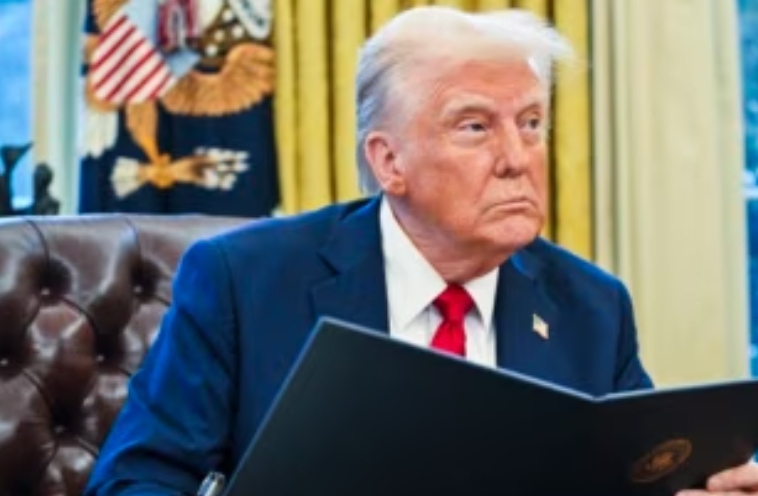도널드 트럼프 미국 대통령의 관세 정책

도널드 트럼프 미국 대통령의 관세 정책은 미국의 무역 파트너국에 대한 강력한 관세 부과를 통해 미국의 경제를 보호하고, 불법 이민 및 마약 밀매 문제를 해결하려는 목적을 가지고 있습니다. 최근의 정책 변화와 그 배경에 대해 자세히 살펴보겠습니다.
트럼프의 관세 정책 개요
- 관세 부과 대상: 트럼프는 중국, 멕시코, 캐나다에서 수입되는 모든 상품에 대해 새로운 관세를 부과한다고 발표했습니다. 구체적으로, 캐나다와 멕시코에는 25%, 중국에는 10%의 관세가 부과됩니다. 다만, 캐나다산 에너지는 10%의 낮은 세율이 적용됩니다.
- 정책의 배경: 트럼프는 이 조치를 통해 세 나라가 미국으로 유입되는 마약과 불법 이민 문제를 해결할 것을 요구하고 있습니다. 이는 국제비상경제권법(IEEPA)을 통해 시행된 조치입니다.
관세 정책의 경제적 영향
- 한국 경제에 미치는 영향: 트럼프의 관세 정책은 한국 기업에도 큰 영향을 미치고 있습니다. 많은 한국 기업들이 멕시코에 생산 기지를 두고 있으며, 관세 전쟁이 계속될 경우 한국의 수출 의존도가 높은 경제에 부정적인 영향을 미칠 것으로 예상됩니다.
- 소비자 반응: 미국 내 소비자와 기업들은 관세 부과로 인한 가격 인상을 우려하여 사재기에 나서고 있습니다. 이는 물가 상승을 피하기 위한 조치로, 다양한 제품의 재고가 급증하고 있습니다.
결론
트럼프의 관세 정책은 미국의 무역 파트너국에 대한 강력한 압박을 통해 경제적 자립을 도모하고 있으며, 이는 한국을 포함한 여러 국가의 경제에 중대한 영향을 미치고 있습니다. 이러한 정책은 불법 이민과 마약 밀매 문제 해결을 목표로 하고 있지만, 동시에 소비자와 기업의 행동에도 큰 변화를 일으키고 있습니다. 앞으로의 상황을 주의 깊게 지켜봐야 할 것입니다.
U.S. President Donald Trump's tariff policy aims to protect the U.S. economy and address illegal immigration and drug trafficking through strong tariffs on U.S. trading partners. Let us take a closer look at the recent policy changes and their background.
Overview of Trump's Tariff Policy
- Tariff targets: Trump announced new tariffs on all goods imported from China, Mexico and Canada. Specifically, tariffs of 25% are imposed on Canada and Mexico and 10% on China. However, Canadian energy is subject to a lower tax rate of 10%.
- Background of policy: Trump calls for the move to address the drug and illegal immigration problems that flow into the United States. This is a measure implemented through the International Emergency Economic Rights Act (IEEPA).
Economic impact of tariff policy
- Impact on the Korean economy: Trump's tariff policy has a big impact on Korean companies as well. Many Korean companies have production bases in Mexico, and if the tariff war continues, it is expected to negatively affect the economy, which is highly dependent on Korea's exports.
- Consumer response: Consumers and businesses in the United States are hoarding for fear of price increases due to tariffs. This is a measure to avoid rising prices, leading to a surge in inventories of various products.
Conclusion
Trump's tariff policy has led to intense pressure on U.S. trading partners to promote economic independence, which has had significant implications for the economies of various countries, including South Korea. These policies are aimed at tackling the problems of illegal immigration and drug trafficking, but at the same time they are causing major changes in the behaviour of consumers and businesses. We will have to watch the future situation carefully.
도널드 트럼프 미국 대통령의 관세 정책은 여러 주요 목표를 가지고 있다.
1. 무역 적자 감소: 트럼프는 미국의 무역 적자를 줄이는 것을 주요 목표로 삼았습니다. 그는 미국이 다른 국가들과의 무역에서 불리한 위치에 있다고 주장하며, 이를 개선하기 위해 관세를 부과했습니다.
2. 미국 제조업 보호: 트럼프 행정부는 미국 내 제조업을 보호하고 일자리를 창출하기 위해 외국 제품에 대한 관세를 인상했습니다. 이는 미국 내 기업들이 경쟁력을 유지하도록 돕기 위한 조치로 해석되었습니다.
3. 중국과의 무역 불균형 해소: 특히 중국과의 무역에서 불공정한 관행을 시정하기 위해 고율의 관세를 부과했습니다. 이는 중국의 지적 재산권 침해와 불공정 거래 관행에 대한 반응으로 볼 수 있습니다.
4. 국가 안보: 일부 관세는 국가 안보를 이유로 정당화되었습니다. 예를 들어, 철강 및 알루미늄에 대한 관세는 미국의 군사 및 인프라 산업을 보호하기 위한 조치로 설명되었습니다.
5. 협상 카드로 활용: 관세는 다른 국가와의 무역 협상에서 유리한 위치를 차지하기 위한 수단으로 사용되었습니다. 이를 통해 더 나은 무역 조건을 이끌어내려는 전략이었습니다.
이러한 목표들은 트럼프 행정부의 경제 정책과 무역 전략의 핵심 요소로 작용했습니다.
U.S. President Donald Trump's tariff policy has multiple primary goals.
1. Decreasing trade deficit: Trump has made reducing the U.S. trade deficit his primary goal. He argued that the United States was at a disadvantage in trade with other countries, imposing tariffs to improve.
2. U.S. Manufacturing Protection: The Trump administration has raised tariffs on foreign products to protect manufacturing in the United States and create jobs. This was interpreted as a measure to help companies in the United States remain competitive.
3. Resolving trade imbalances with China: High tariffs imposed to correct unfair practices, especially in trade with China. This can be seen as a response to China's intellectual property infringement and unfair trade practices.
4. National Security: Some tariffs have been justified on national security grounds. For example, tariffs on steel and aluminum have been described as measures to protect the military and infrastructure industries in the United States.
5. Use as bargaining chip: Tariffs were used as a means to gain an advantage in trade negotiations with other countries. It was a strategy to bring about better terms of trade through this.
These goals served as key elements of the Trump administration's economic policies and trade strategies.